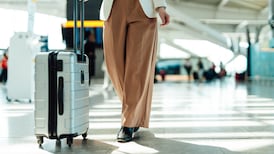Lufthansa is open to discussions on a strategic alliance with Aer Lingus, according to Mr Jurgen Weber. But the chief executive of the German international airline group says he has had no approaches yet from the Irish national airline to form "an association".
Aer Lingus has said that an alliance with a major airline is essential and would be formed within five years. A strategic alliance report is being prepared for the Government.
Aviation sources have said recently that the choice of partners was between STAR Alliance, of which Lufthansa is a member, or the British Airways/American Airlines group. The other airlines in the STAR Alliance are United Airlines, Air Canada, SAS, Thai International and Varig. "I know there is a lot of speculation and there are a lot of strong arguments for Aer Lingus to build up a partnership with Lufthansa because of its geographic location and the business strength," Mr Weber said. In Dublin last week to address the German-Irish Chamber of Industry and Commerce, Mr Weber spoke to The Irish Times.
Mr Weber said that each of the six STAR Alliance members was able to bring in partners, and Lufthansa had brought in South African Airways under this arrangement. "We are open for such kinds of discussions," Mr Weber said.
He added that under such arrangements, it would be better for customers if air traffic between Ireland and Central Europe was co-ordinated. Typically, such an association would involve commercial co-operation across a range of activities, including passenger services, schedule development and ground handling. Commenting on the efforts being made to sell the TEAM Aer Lingus aircraft maintenance company to the Dutch conglomerate, FLS, Mr Weber said that such a medium-sized company would have problems if it could not draw on the business base and experience of a major airline.
Lufthansa, which employs 1,700 people in Ireland, owns Shannon Aerospace and Shannon Turbine Technologies in Co Clare, and is the major partner in Lufthansa Airmotive in Dublin.
Mr Weber added that the development of European airline industry was "very positive". The company had experienced the greatest growth from its European traffic last year, while the eastern European market was developing. "For Lufthansa there is a very important market. We have more than 400 flights in the area of Eastern Europe and the former Soviet Union. We fly more frequently to Moscow than to New York," he said.
Economic and Monetary Union (EMU) was a positive development. "For us it is better competition wise, because we always suffered under the strong deutschmark."
He said that the trend towards larger Boeings and Airbuses was "a necessity" because landing slots were getting "shorter and shorter". "The only chance for growth on some routes is larger aeroplanes," he said.
Lufthansa operates five German destinations from Dublin, with the Frankfurt one running 10 times a week.
During the summer, four flights - from Munich, Hamburg, Dusseldorf, and Frankfurt - to Knock Airport, Co Mayo, weekly, reflect a buoyant tourist trade. The airline has also established its European call centre in Dublin.
The Lufthansa group made pre-tax profits of 1.65 billion deutschmarks in 1997 (£660 million), a 140 per cent increase on the 1996 figure of DM686 million (£275 million). The former loss-making State-owned company now has 490,000 shareholders, over a third of whom are foreign investors, after completing its privatisation programme last year. Over 50 per cent of the company's 58,000 employees have shares.
"Privatisation has set us free," Mr Weber told members of the German-Irish Chamber of Industry & Commerce.
The process of privatising Lufthansa began in 1992 and was completed with the final rights issue last October which generated DM4 billion (£1.6 billion). In 1991 the group registered losses of almost DM301 (£120 million) in the wake of the Gulf War which left the airline with an over-capacity of seats and short of capital.
The company reduced its workforce by 17 per cent, resulting in 8,000 job losses. It also cut material costs by 15 per cent, relinquished unprofitable routes and outsourced non-core activities, reverting to a profit-making situation in 1994.










